Table of Contents

Pineberries are those beautiful white strawberries that most people think are just another photoshop edited version of the common strawberries.
However, they are a type of white strawberries that grow naturally in regions across South America.
In this article, we gathered all the information you need to know about pineberries, their origin, the nutritional difference between pineberries and strawberries, drawbacks and precautions, alongside tips on how to use and store them.
What are pineberries?
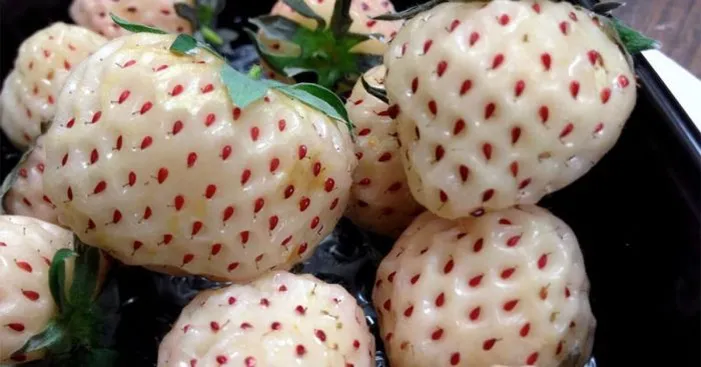
Pineberries are very breathtaking and they captured the hearts of people around the world and particularly in Japan.
In fact, the Japanese call this fruit “Shiroi houseki” AKA ” white jewel” because of its expensive price and high demand.
They are a cross cultivar between two natural types of strawberries the Fragaria virginiana and Fragaria chiloensis.
However, it was more than 3 centuries when Europeans discovered pineberries in South America.
It was a member of King Louis XIV’s service that first brought it to the French territory.
Although many people think that pineberries are the result of genetic modification, this type of strawberry is the oldest one in existence.
Particularly, the fruit is native to Chile and it is believed that it was first grown by Mapuche Indians.
People love pineberries, in fact, there is even an annual festival in Chile organized to celebrate these white strawberries.
The odd white color of this fruit is caused by a protein deficiency which prevents the fruit from going red when it ripens.
The outer layer may get a pale pink color once the fruit is totally ripened, however, the inside remains radiant white.
In recent years, pineberries have almost when extinct that’s when Dutch farmers started growing their species by crossing strawberries and pineapples.
Did you know that just one pineberry may cost you more than 8$?
Pineberries: the expensive jewelry fruit
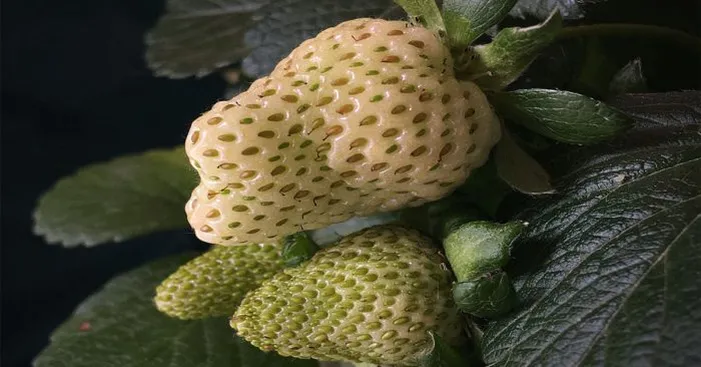
Among the downsides of pineberries is their extremely high price.
In fact, so many reports claim that pineberries are among the 10 most expensive fruits worldwide.
As we mentioned above, the highest demand for this fruit is in Japan where people sometimes pay more than 70$ for a dozen.
Meanwhile, the Chinese grow their own pineberries by crossing strawberries and pineapples which is why a dozen pineberry only cost 8$.
Nutritional composition of pineberries:
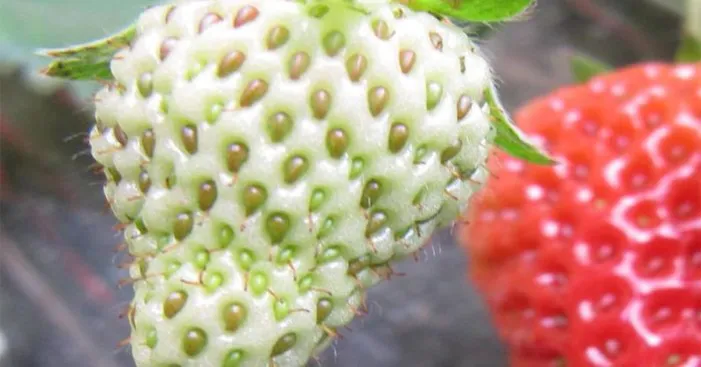
Like the classical strawberries, these white strawberries are full of minerals and vitamins which makes them more than just pretty fruits.
Among the most abundant micro-nutrients in pineberries, we mention:
- Vitamin B9:
This fruit is rich in vitamin B9 which works well with vitamin C and A to strengthen the regeneration process of the cells. - Vitamin A:
One of the most abundant vitamins in pineberries is vitamin A which makes this fruit one of the best sources of this nutrient.
As one of the most powerful antioxidants, vitamin A contributes to strengthening the immune system, promotes eye health, and enhances bone density. - Vitamin C:
Being part of the citrus fruit family, pineberries are full of vitamin C which have a direct impact on the immune system.
Also, this vitamin promotes wound healing and boosts the overall immune system. - Potassium:
This exotic fruit offers a great amount of potassium which has a lot of benefits, especially for the elderly.
In fact, potassium helps control blood pressure, synthesize protein, and maintain the proper functioning of nerves and muscles.
The nutritional difference between pineberries and strawberries:
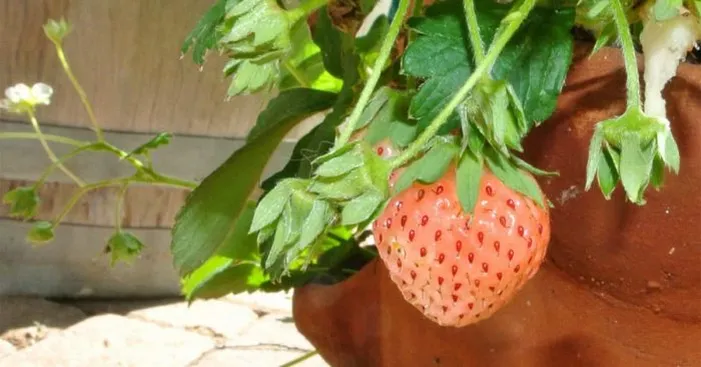
Even though the most recognized difference between pineberries and strawberries is the color, they are also different nutritionally speaking.
For instance, pineberries and strawberries do not have the same amount of sugar or the same size.
Anthocyanin:
Pineberries can be referred to as “albino strawberries” this is because they don’t have that red vibrating color.
As a result, the white color of this fruit means that they don’t have the same amount of anthocyanins as red strawberries.
On the other hand, strawberries are full of anthocyanins which is the component that makes them turn red once they ripen.
As for pineberries, they are genetically different and artificially grown which makes the photosynthesis process very slow.
Nonetheless, some pineberry varieties can have a cherry blossom or pale pink color due to the slow process of turning red when they ripen.
Sugar content:
Due to their white color, most people would assume that pineberries are more tangy and sour than red strawberries.
In reality, pineberries are very less acidic and do not taste sour at all!
Actually, red strawberries are around 10 degrees Brix but some varieties of pineberries are up to 12 degrees Brix.
Nonetheless, if you look at the reviews on the internet you would notice that most people say that pineberries are less sweet than strawberries.
It can be tricky, but the most realistic answer is that the sweetness of pineberries depends on the variety.
Drawbacks and precautions before you consume pineberries:

A general rule says that most artificially created food comes with possible drawbacks.
One of the major drawbacks is that pineberries tend to produce fewer and fewer berries every season.
For someone who grows pineberries for sale, this is not a profitable product as he can yield more red strawberries using the same garden space.
This can also explain the extremely high price of pineberries, basically, the farmers charge the customer based on the rareness of this fruit.
In addition, it is only fair to inform you that some people claim that some pineberries types taste just watery and dull.
As mentioned above, pineberries lack a type of protein known as Fragaria A1 which is the main cause of strawberry allergy.
This is actually great news since it means that those who are allergic to strawberries won’t suffer side effects if they consume pineberries.
However, some pineberry varieties have a pale pink or cherry blossom color, these types may still contain Fragaria A1 and they must be avoided in case of allergy.
It is always recommended to consult your doctor if you are allergic to strawberries and want to consume these white jewels.
Consuming pineberries:
pineberries jelly or jam:

Ingredients:
- 30 to 40 pineberries.
- ½ cup of sugar.
Preparation:
- Cut the pineberries into small pieces to facilitate their cooking.
- In a pan, place the pieces of the pineberries with sugar and let it simmer on medium heat.
- You will notice that white foam starts coming out so make sure you skim it off using a spoon.
- Once the mixture becomes homogenous turn down the heat and lets it cook for an additional 10 minutes to ensure that all moisture is evaporated.
- At this stage, the mixture must have a jam-like texture that is thick so take the pan off the heat and let it cool down.
- Pour the pineberry jam into a glass bottle and place it in the fridge and use it for the next 3 months.
White pineberry soup:

Ingredients:
- 60 pineberries.
- 4 tbsp of lemon juice.
- 1 tsp of salt.
- 2 tbsp of honey.
- 3 tbsp of soy milk.
- 2 tbsp of olive oil.
- Mint leaves (optional).
Preparation:
- Blend 10 pineberries with 2 tbsp of lemon juice and salt to make a puree then let it cool down in the fridge.
- To make the mousse, blend the rest of the pineberries with honey, soy milk, and lemon juice until you obtain a foamy mixture.
- Place pineberries on the borders of a plate then pour the liquid puree then pour the foamy mixture on top of it.
- Sprinkle some mint leaves and olive oil on top and enjoy it with your loved ones.
Pineberries salad:

Ingredients:
- 15 pineberries.
- ½ bunch of broccoli.
- ½ avocado.
- 1 bunch of parsley.
- 4 kale leaves.
- 1/2 cup of crushed almonds.
- 1 tbsp of olive oil.
- 2 ounces of feta cheese.
- 1 tsp of salt and 1 tsp of pepper.
Preparation:
- Cut 5 pineberries and the broccoli into small pieces that can easily be eaten
- Do the same for kale and parsley leaves and make sure you cut them into the pieces then wash them and let them dry out on a piece of cloth.
- Prepare the avocados by cutting them diagonally and then into small dices.
- Now blend the 10 remaining pineberries alongside olive oil, lemon juice, salt, and pepper, and keep blending until you obtain a puree-like mixture.
- In a bowl, mix the cut-down parsley, kale, and avocados then pour the puree on top and stir using a spoon.
- Serve the salad on a dish and sprinkle feta cheese and crushed almonds on top of it.
Storing pineberries:
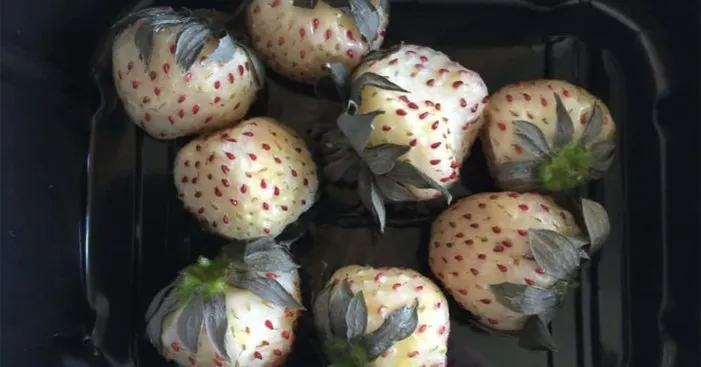
To preserve their texture and flavor, pineberries are best consumed fresh within 2 days after purchase.
You can still keep these fruits in the fridge for up to 3 days and they will remain fresh.
However, you should rinse pineberries with tap water to remove any dust or parasites then dry them with a piece of cloth before you store them.
This is because strawberries in general tend to spoil quickly if the water penetrates them.
After you wash them and dry them, place the pineberries in a plastic bag to ensure that they keep their moisture.
In case you want to freeze pineberries, try to sprinkle some sugar on them before you place them in a freezing bag to make it up for the lost sugar and prevent the fruits from sticking together.
